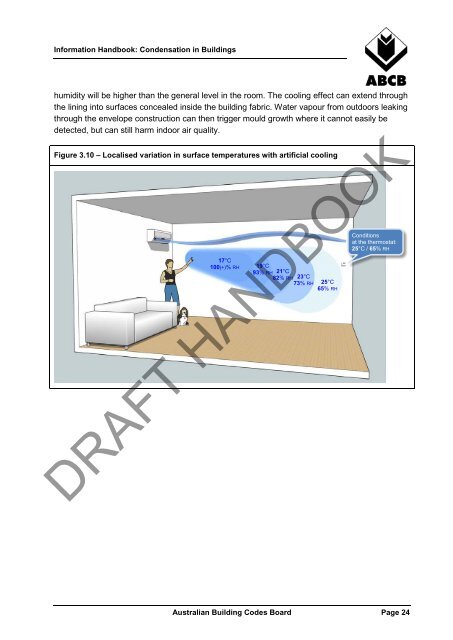Condensation in Buildings - Australian Building Codes Board
Condensation in Buildings - Australian Building Codes Board
Condensation in Buildings - Australian Building Codes Board
You also want an ePaper? Increase the reach of your titles
YUMPU automatically turns print PDFs into web optimized ePapers that Google loves.
Information Handbook: <strong>Condensation</strong> <strong>in</strong> Build<strong>in</strong>gs<br />
humidity will be higher than the general level <strong>in</strong> the room. The cool<strong>in</strong>g effect can extend through<br />
the l<strong>in</strong><strong>in</strong>g <strong>in</strong>to surfaces concealed <strong>in</strong>side the build<strong>in</strong>g fabric. Water vapour from outdoors leak<strong>in</strong>g<br />
through the envelope construction can then trigger mould growth where it cannot easily be<br />
detected, but can still harm <strong>in</strong>door air quality.<br />
Figure 3.10 – Localised variation <strong>in</strong> surface temperatures with artificial cool<strong>in</strong>g<br />
17°C<br />
100(+)% RH<br />
19°C<br />
93% RH 21°C<br />
82% RH 23°C<br />
73% RH<br />
25°C<br />
65% RH<br />
Conditions<br />
at the thermostat:<br />
25°C / 65% RH<br />
DRAFT HANDBOOK<br />
<strong>Australian</strong> Build<strong>in</strong>g <strong>Codes</strong> <strong>Board</strong> Page 24
















